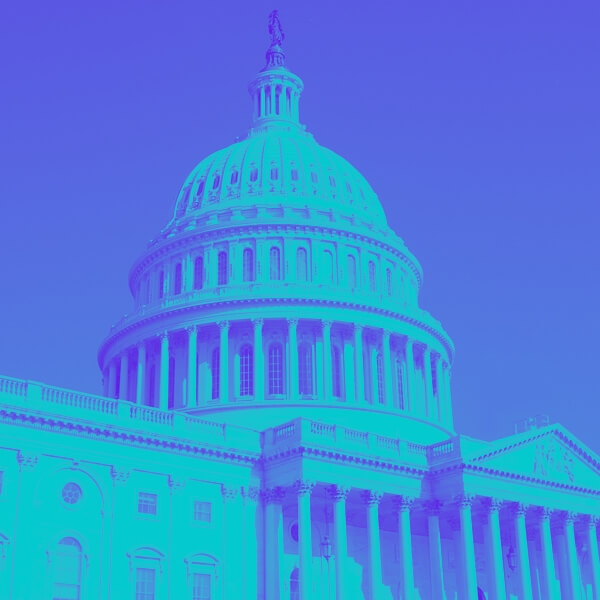Here are four key takeaways for government leaders from the industry breakout sessions of X4 2024.
1. Sticking to the status quo is risky
During the X4 2024 breakout session, Human-centered government: what it takes to design effective digital services, Marcy Jacobs, Chief Digital Experience Officer, Maryland Department of Information Technology, shared that most people tend to focus on the cost and risk of change, but not the inverse. She believes there’s often a greater cost in not trying something different.
"There’s a lot to be said for the risk of doing things the way they’ve always been done,” said Jacobs. “The status quo is not inherently de-risked – nor is it getting us the results we want.”
Case in point: Instead of an expensive, multi-year project, Jacobs and her team tried a new approach – building something ‘tiny’ over a six-week sprint.
“That’s de-risking,” she quipped. “Small wins change the conversation – away from traditional ways of working and towards something that actually has an impact.”
2. Connect customer and employee experience to garner the most impact
In her X4 breakout session, State and Local Government: Prioritizing experience in unlikely settings, Nicole Flemming, Chief of Offender Advocacy, Oklahoma Department of Corrections, shared her department’s strategic vision: Change lives.
“We change lives for our inmate population, but also for our staff, for the public, for victims – all to have a healthier nation and world at large,” she said. "We had been using Qualtrics to measure the employee experience to improve engagement and retention rates. And then we thought, 'What if we tried to do the same thing with inmates?'”
Flemming shared that reaching 23,000 people – especially those in difficult circumstances – was not without its myriad of challenges. But she and her team believed in the benefits of collecting data about both the employee and inmate experience.
“We serve our inmates, so in order to affect a cultural change, and turn the ship in the way we think about corrections, we have to help them utilize their voice," she said.
With the feedback they’ve collected, Oklahoma Corrections has been able to make connections between the data sets, address issues that inmates have raised, and communicate those actions back to them – the latter being of utmost importance in maintaining a positive rapport.
“We’re trying to build trust with our inmates, so we have to be transparent with the data, and follow through with our actions,” she said.
3. Foster partnerships to build trust
Change can be scary. And when it comes to new processes, programs, or technology, people are innately skeptical.
Anebi Agbo, Digital Solutions Director, State of Arizona, has experienced this first-hand. His department and role are new, so the work he’s trying to accomplish is being met with some level of uncertainty.
"I’m the first-ever Digital Solutions Director for the State of Arizona, so people are naturally curious,” he said during the X4 2024 breakout session, State and Local Government: Human-centered government: what it takes to design effective digital services. “They’re asking, 'What are you doing? How does this affect me?'”
Agbo and his team are not just offering support, but they are actively seeking to collaborate with all state-level agencies to design and improve their digital services. This approach is a testament to their commitment to fostering partnerships and building trust.
“A big part of selling our vision is positioning ourselves as partners who are here to help make our colleagues’ jobs easier and their programs better,” he said. “Reframing the relationship in this way helps to build rapport – and overcome skepticism."
4. One-off surveys aren’t enough to manage massive change
When the State of Iowa condensed 37 departments into 16, they knew they were going to need some help managing this massive cultural change. With the support of Qualtrics’ XM for Employee Experience, Ben Keenan, Chief Strategy Officer - State of Iowa, Executive Branch (DAS), and his team were able to keep a pulse on employee sentiment throughout the change management process.
A key learning? "When it comes to managing change, the more you can get out in front of it, the more you can communicate, and the more consistent your communication is, the better the outcome will be,” said Keenan.
And that includes communicating about surveys. “We created survey communication templates for our leaders so that there was regular communication around surveys, and what actions we planned to take based on employee feedback. In three to four months, we saw a 20% increase in trust,” he said.
During his X4 breakout session, State and Local Government: Workforce resilience: why employee engagement won’t cut it, Keenan also reminded folks that effective communication is a two-way street.
"Feedback is a gift, so don't discourage negative feedback. Employees are going to feel that way whether you ask them or not,” he said. “We're not a perfect organization, so we took a chance on seeing what we could do better. That's what it takes to become a resilient organization.”



